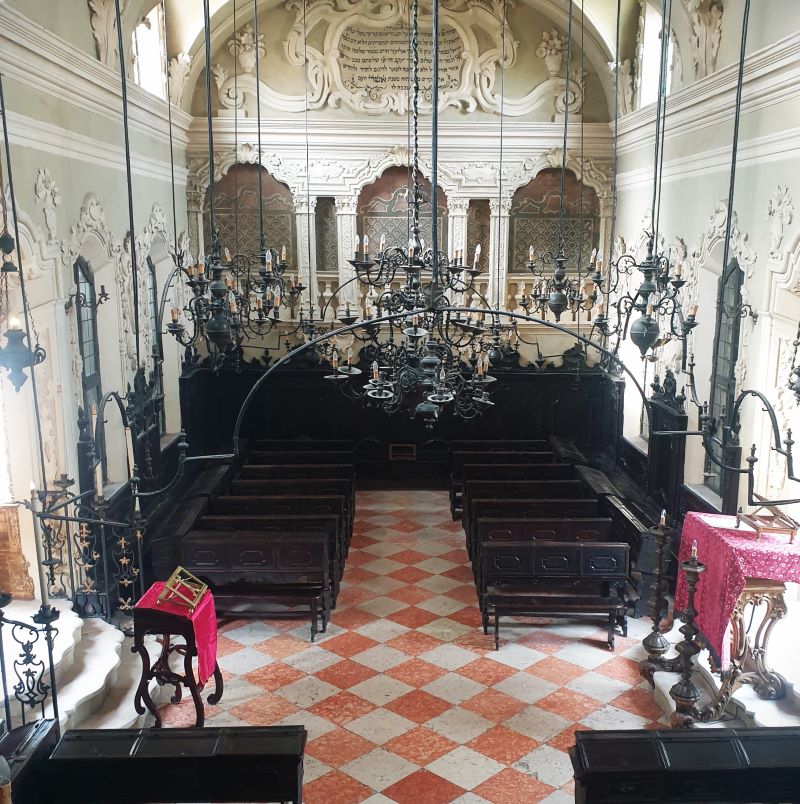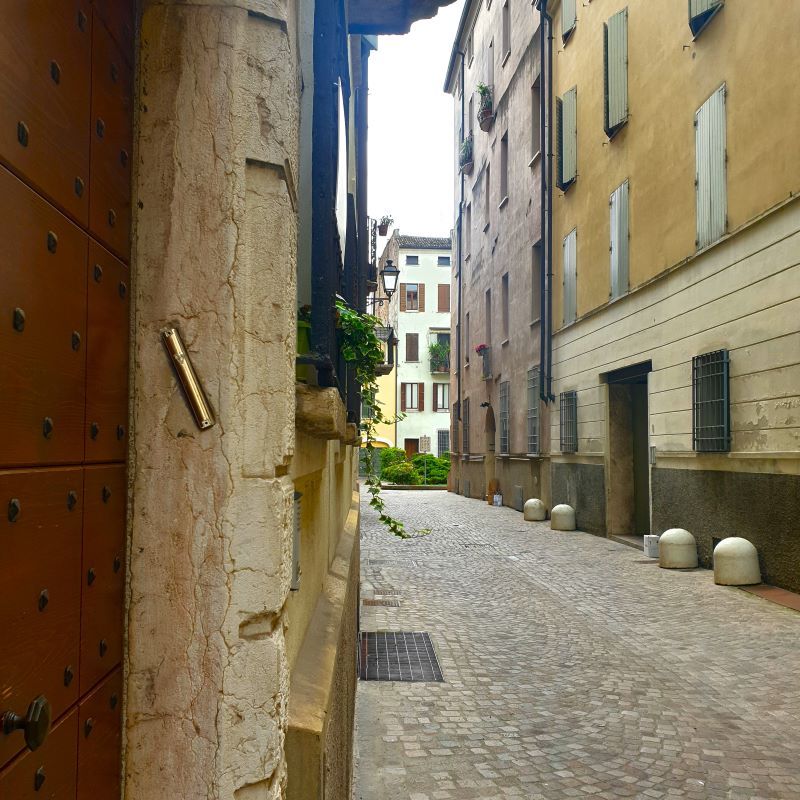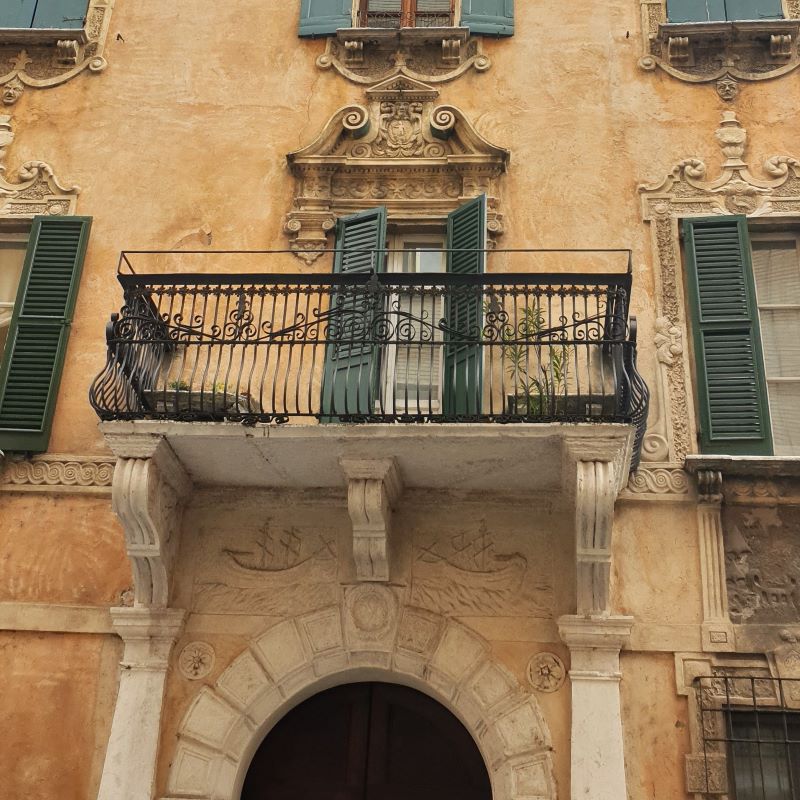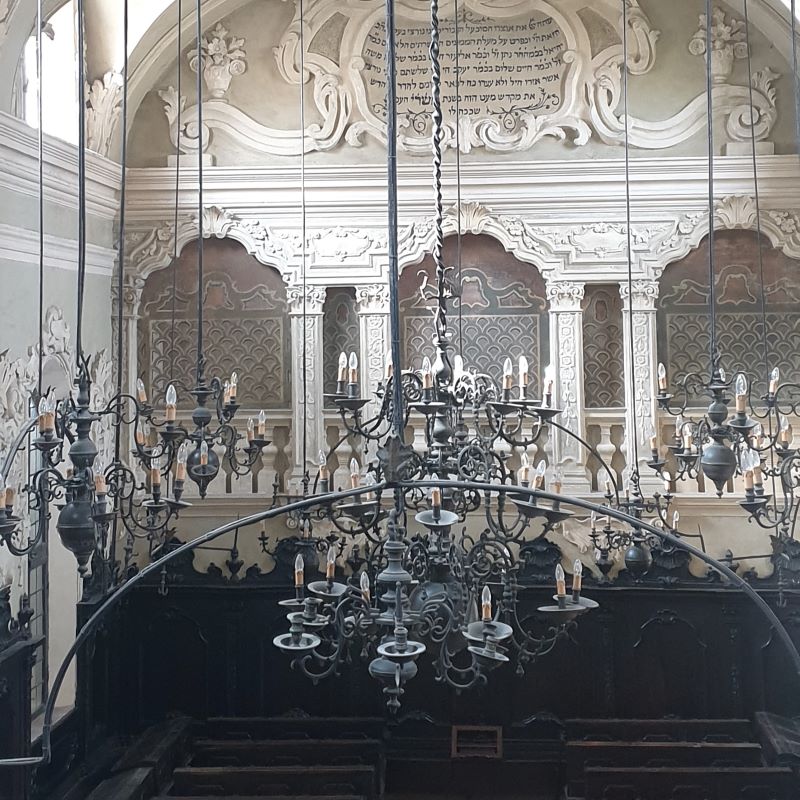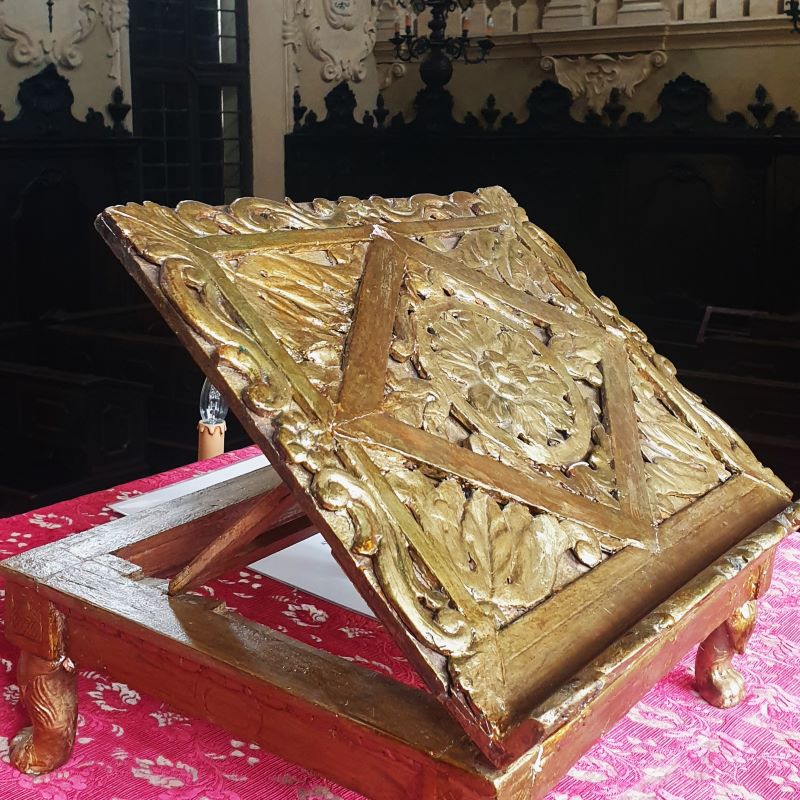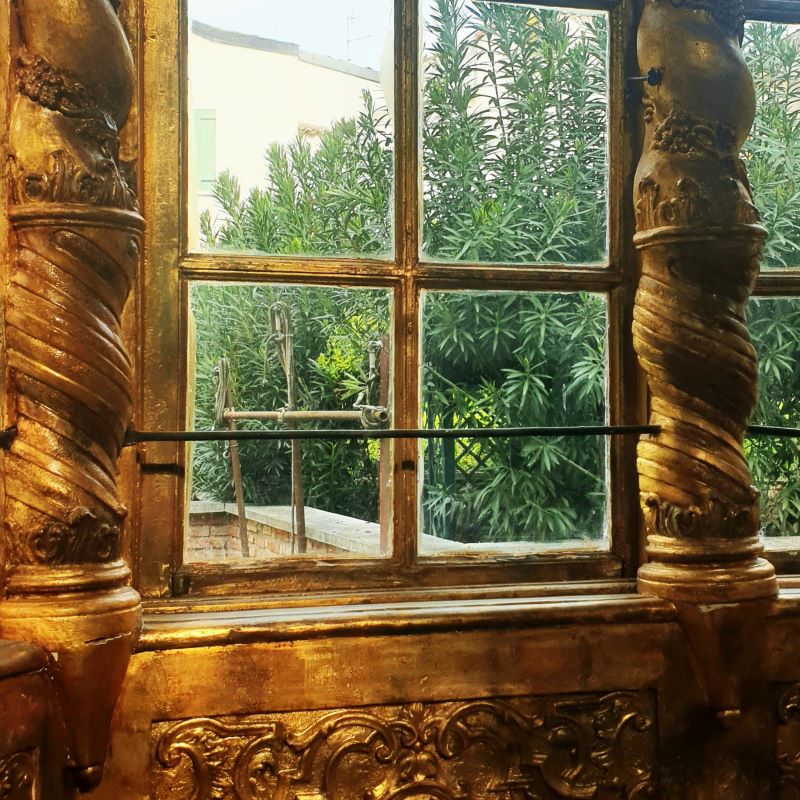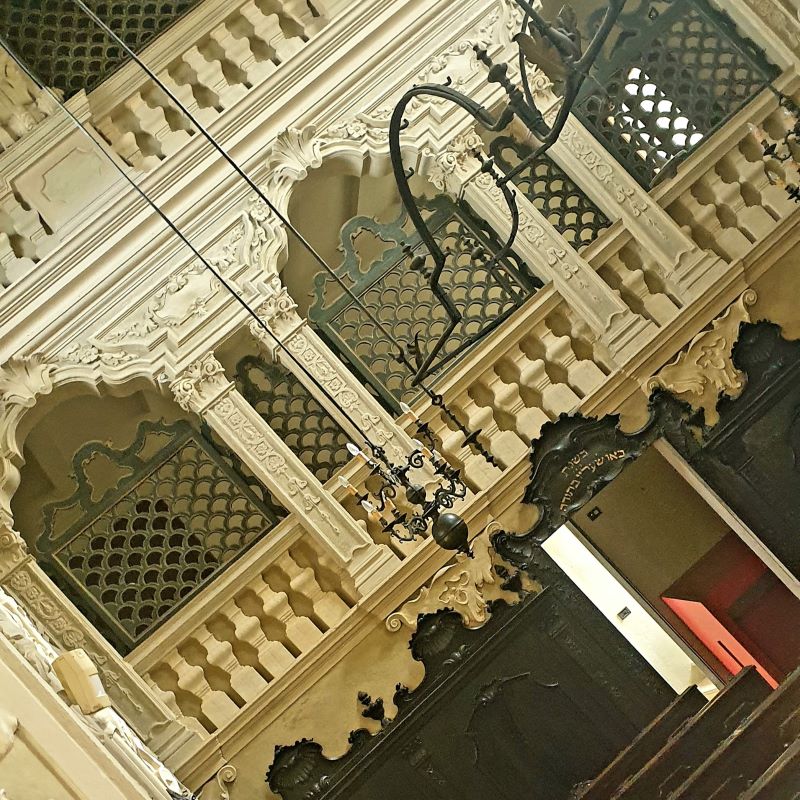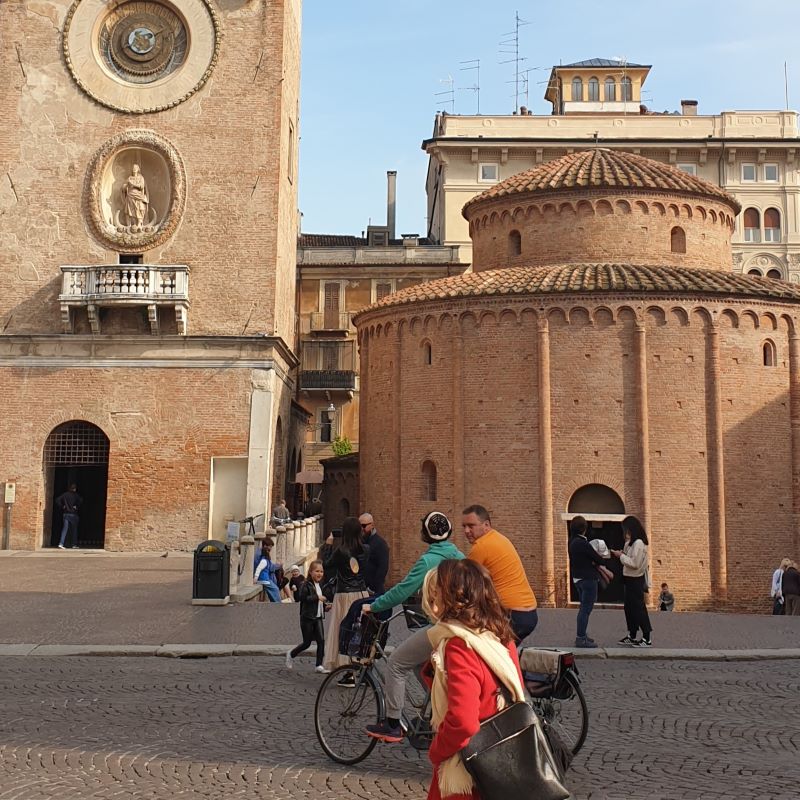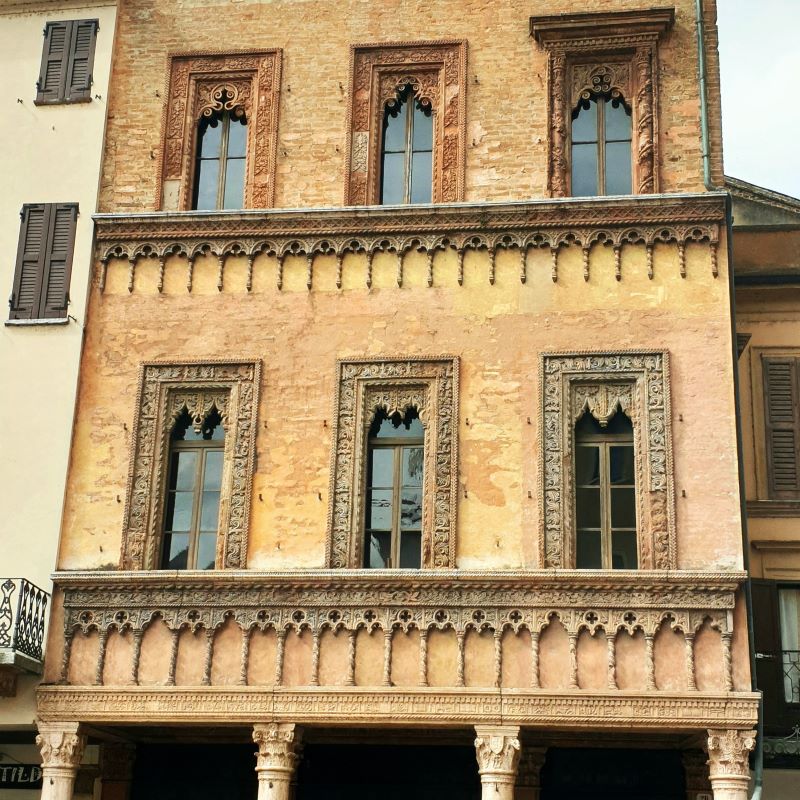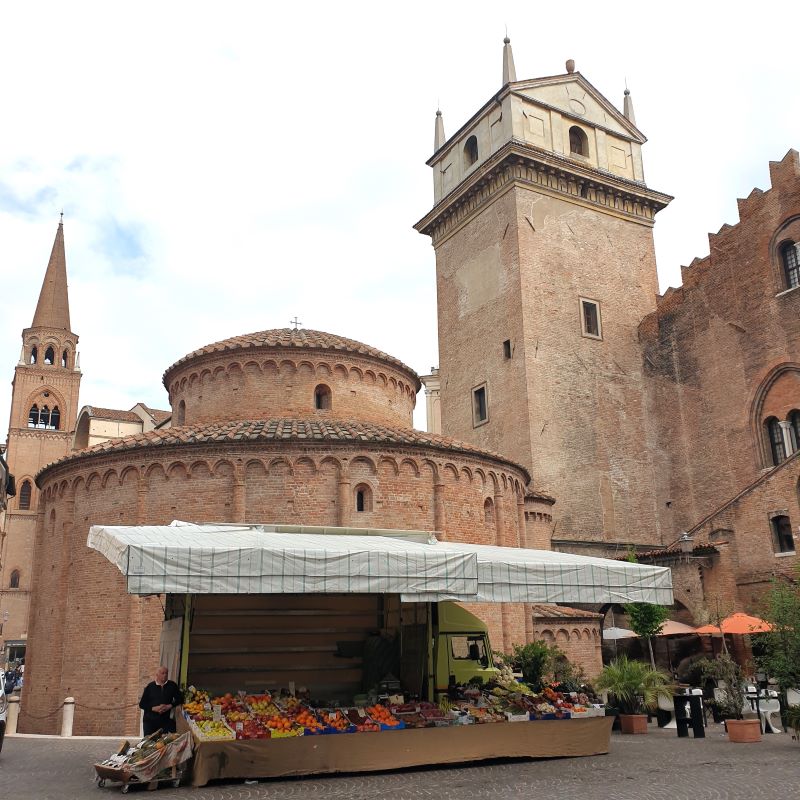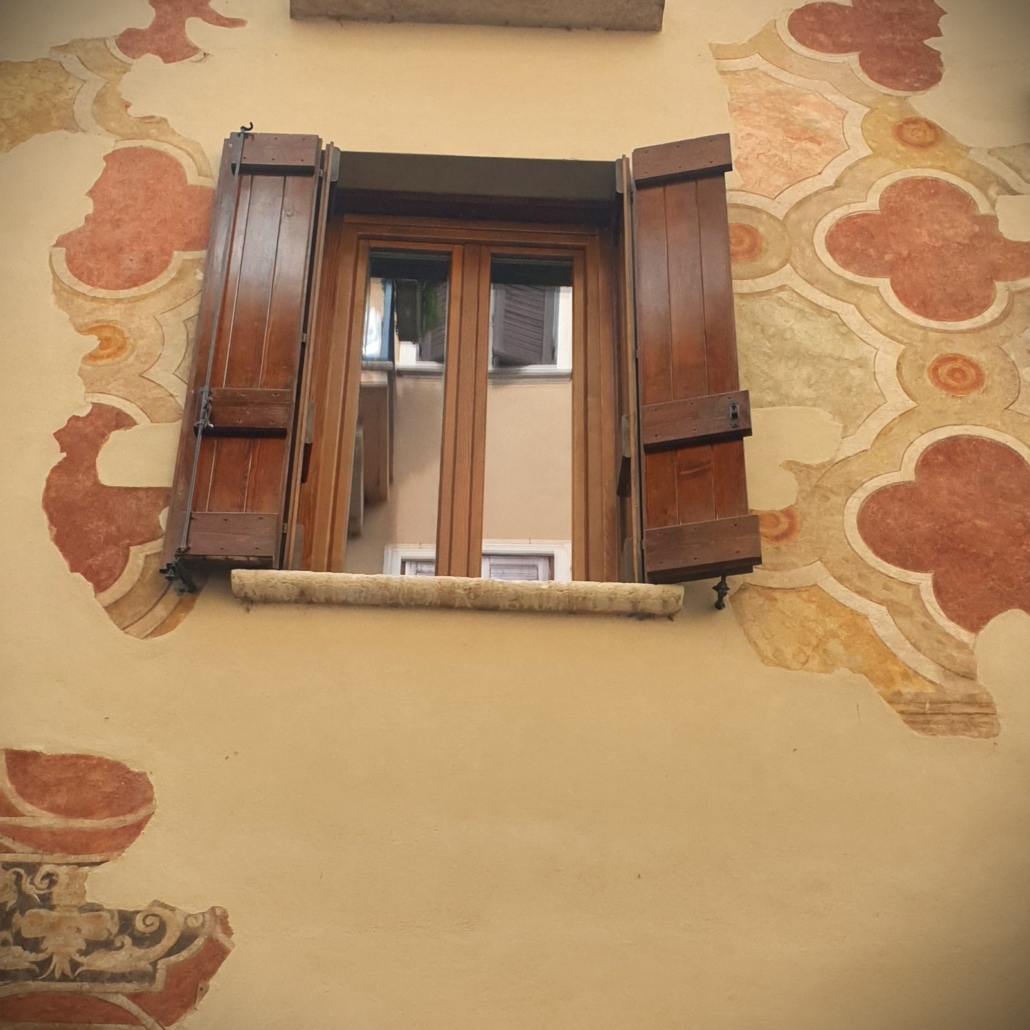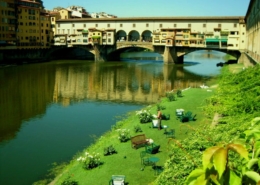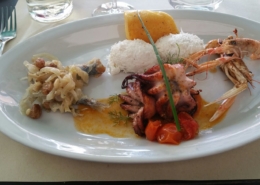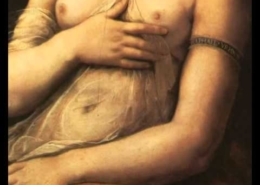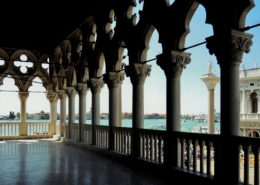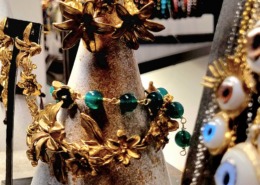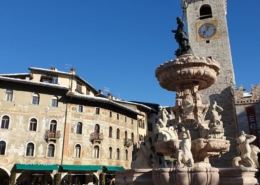Highlights of this tour
– Guided walk in the former Ghetto of Mantua
– Walking lecture about the Jews of Mantua
– Notes on the most famous Mantuan Jews
– Visit to the Norsa Torrazzo Synagogue
A WALK IN JEWISH MANTUA
A WALK IN JEWISH MANTUA – During the Renaissance Mantua welcomed new Jewish families arriving from different areas of
Europe (Spain, Portugal, Southern France, Germany, Central Italy). They were merchants,
teachers, artisans. These new arrivals joined the already existent community, mostly formed by
Ashkenazi moneylenders and bankers, that had settled in the Lombard city in the early 1400s.
The policy of the Gonzaga family towards the Jews was fundamentally tolerant. Some outstanding
Jewish personalities such as the physicians of the Portaleone family, the music composer
Salomone Rossi and his sister (a well-known singer) rotated around the Gonzaga court.
Although at the time there were no restrictions, the Jews of Mantua tended to live concentrated in a
very central area of the city, close to the markets, between Contrada del Grifone and Contrada del
Cammello. Here they rented and bought shops, warehouses, and apartments. The neighborhood
began to be known as ‘Contrada degli Ebrei’, the Quarter of the Jews. Formally there was no
prohibition for the Christians that decided to live in this area, it was anyhow discouraged by the
Christian Church, which saw the danger of a too close relationship between the two congregations.
For the Gonzagas, the fact that the Jews lived all in the same place made control and taxation
easier, so they didn’t complain. In the end, much later that most Italian States (Venice created the
first Ghetto in 1516), the Gonzagas surrendered to the heavy pressions of Pope Clement VII. The
Ghetto of Mantua was then officially established in 1611. The discussion between the Duca and the
‘University of the Jews’ had started in 1602, with specific request from the Jewish part to be settled
in an area including some of the ‘strategic’ streets.
According to tradition there were up to 12 synagogues in the Ghetto of Mantua, with up to 3,000
Jews, approximately the 7% of the Mantuan population. They were destroyed in 1630 by the
mercenary troops (known as the Lansquenets) of Emperor Ferdinand II.
Six of them were later rebuilt. As in the ghettoes of Venice and Rome they were known with the
name of ‘scholae’. The Gonzagas imposed to the Jews of Mantua a quite unusual form of taxation:
they had to finance all the public theatrical performances, including the cost of costumes,
musicians, dancers, and so on.
In 1707 the Duchy of Mantua passed under the Habsburgic dominion, and the Jewish Community
obtained the first civil rights. In 1798, with Napoleon’s invasion, the Ghetto was abolished with all
its restrictions. Many of the Mantuan Jews moved to Milan, were the local Jewish Community
finally developed as an extension of the one in Mantua.
The Ghetto was totally transformed at the beginning of the XX century, when the area became an
institutional centre, with erection of the Bank of Italy and other important public buildings.
A WALK IN JEWISH MANTUA – A walk in what was once the Ghetto is nevertheless interesting, as
many traces of the old quarter persist. We start at the Rotunda San Lorenzo, where was once one
of the gates of the Ghetto, with a Christian key-holder, and continue through the streets
summoning up the long history of the Jews of Mantua, reconstructing what was the everyday life of
the Jews forced to live and work here, in a narrow space, probably occupied by some 500 families.
A visit to the only surviving synagogue, the elegant 17 th century prayer room called ‘Norsa
Torrazzo’, now reconstructed in Govi Street, will be the occasion of commemorating the most
famous Mantuan Jew, the talented musician and composer Salomone Rossi. Via Calvi, once
Contrada del Cammello, was busy with goldsmiths working at rosaries, crucifixes, and other
religious items for the pilgrims going to St Andrew Church (which still today enshrines the so-called
‘Madonna of the Jews’, a 15 th c. painting showing the Jewish banker Daniel Norsa and his family at
the foot of the Virgin, wearing the yellow ‘wheel’, the mark imposed by the Gonzagas to the Jews).
In Via Bertani we admire the so-called ‘House of the Rabbi’, a late 17 th century building with
beautiful Baroque representations of monuments, perhaps referring at biblical cities. Thus is one of
the rare buidings that escaped demolishing at the beginning of the 20 th century.
The Norsa Torrazzo Synagogue, still used by the tiny Jewish Community that still lives in Mantua,
is a luminous, charming, well-proportioned rectangular room decorated with Rococo twisted
columns and a profusion of metal chandeliers. The vaulted ceiling and the walls are covered with
elaborate stuccoes exalting the glory of the Norsa family and quoting passages from the Torah.
You might also like our tours of Jewish Venice.
Cost of this tour
- This tour lasts two hours and costs 250 euros up to six people (not per person).
- Only private parties.
- For larger parties send us an email!
- Entrance fees per person: 20 euros (not an official entrance fee, but a contribution to Mantua’s small Jewish Congregation)
Dress Code and advice
- Short sleeves and knee high skirts/pants ok
- No sleeveless garments, no shorts.

